Piazza San Pietro: la storia e i cambiamenti nel corso dei secoli
Piazza San Pietro è una delle più grandi e spettacolari piazze del mondo. Cosa sarebbe la basilica senza il colonnato del Bernini, i Santi in travertino che ci proteggono dall’alto e quel grande spiazzo con le due fontane gemelle? Eppure fino al 1656, i pellegrini che arrivavano al cospetto della Basilica, trovavano davanti a loro un terreno disconnesso, circondato da case e casette ma privo di alcuna delimitazione.
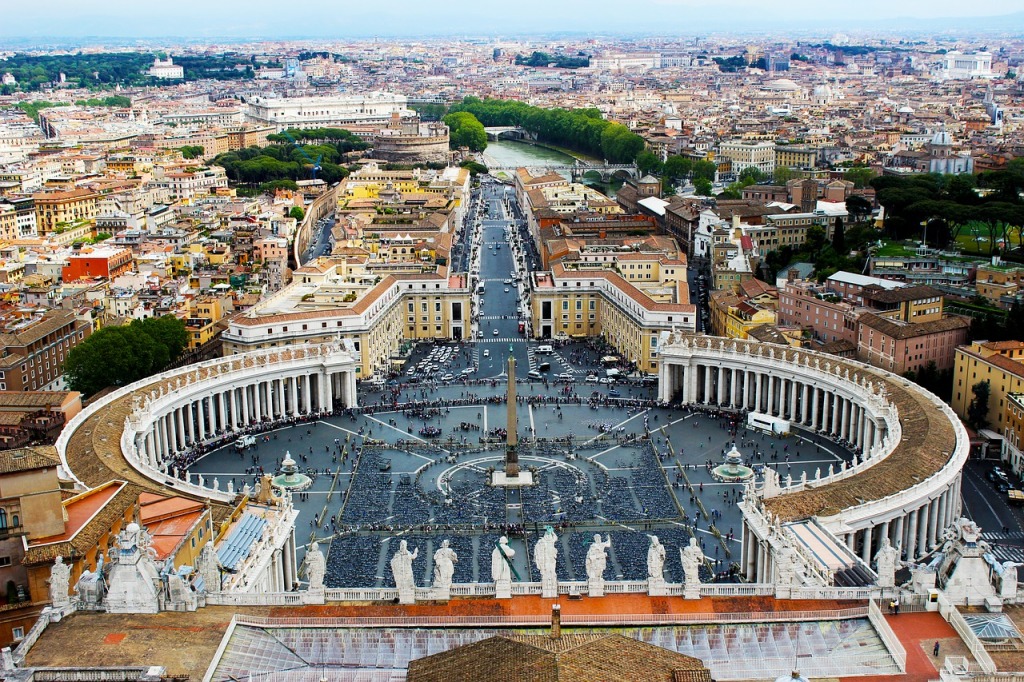
Com’era Piazza San Pietro prima dell’intervento del Bernini
L’obelisco di Nerone era già lì. Fu fatto portare fino a piazza da Papa Sisto V nel 1586, lo stesso pontefice che aveva affidato la conclusione della cupola a Giacomo della Porta. L’acqua zampillava da una sola fontana, quella assemblata nel 1490 e poi modificata dal Maderno agli inizi del Seicento. L’architetto pensò bene di rovesciare sotto sopra il catino superiore per far rompere il getto d’acqua invece che raccoglierlo al suo interno.
San Pietro e San Paolo già attendevano i fedeli alla base della scalinata che porta alla loggia. Non erano quelli però che vedete oggi, rifacimenti ottocenteschi, ma bensì opera dello scultore di Sezze Paolo Romano.
Anche se la piazza spettacolare come quella di oggi, in particolari occasioni come le benedizioni papali impartite dalla loggia, si riempiva all’inverosimile di fedeli.

Piazza San Pietro: la commissione
Fu papa Alessandro VII Chigi nel 1657 a commissionare a Gian Lorenzo Bernini un nuovo progetto per la sistemazione definitiva di Piazza San Pietro. Il pontefice non lasciò esattamente carta bianca all’artista ma specificò che avrebbe dovuto essere un grande portico in grado di accogliere i fedeli e che potesse in qualche modo regolare in gran via vai delle carrozze. Non solo, sempre secondo il volere del papa, il portico avrebbe dovuto essere sormontato da sculture.
Il Bernini si mise subito al lavoro e scriverà poi in merito al suo progetto: “Essendo la Chiesa di San Pietro quasi matrice di tutte le altre, doveva haver’ un portico che per l’appunto dimostrasse di ricevere à braccia aperte maternalmente i Cattolici per confermarli nella credenza, gl’Heretici per riunirli alla Chiesa, e gl’Infedeli per illuminarli della vera fede.”

Com’è Piazza San Pietro oggi
Oggi Piazza San Pietro può arrivare a contenere più di 300mila persone. Senza badare a spese il Bernini riuscì a creare un luogo che con la sua forma abbraccia i pellegrini che arrivano continuamente da ogni parte del mondo.
Le 284 colonne di travertino di ordine dorico con 88 pilastri disposti su quattro file, in travertino di Tivoli, incorniciano la piazza. Le file di colonne hanno una leggera convergenza in direzione della basilica: in questo modo la piazza ha un più ampio respiro e la facciata di San Pietro sembra molto più vicina a chi arriva in piazza di quanto in realtà sia.
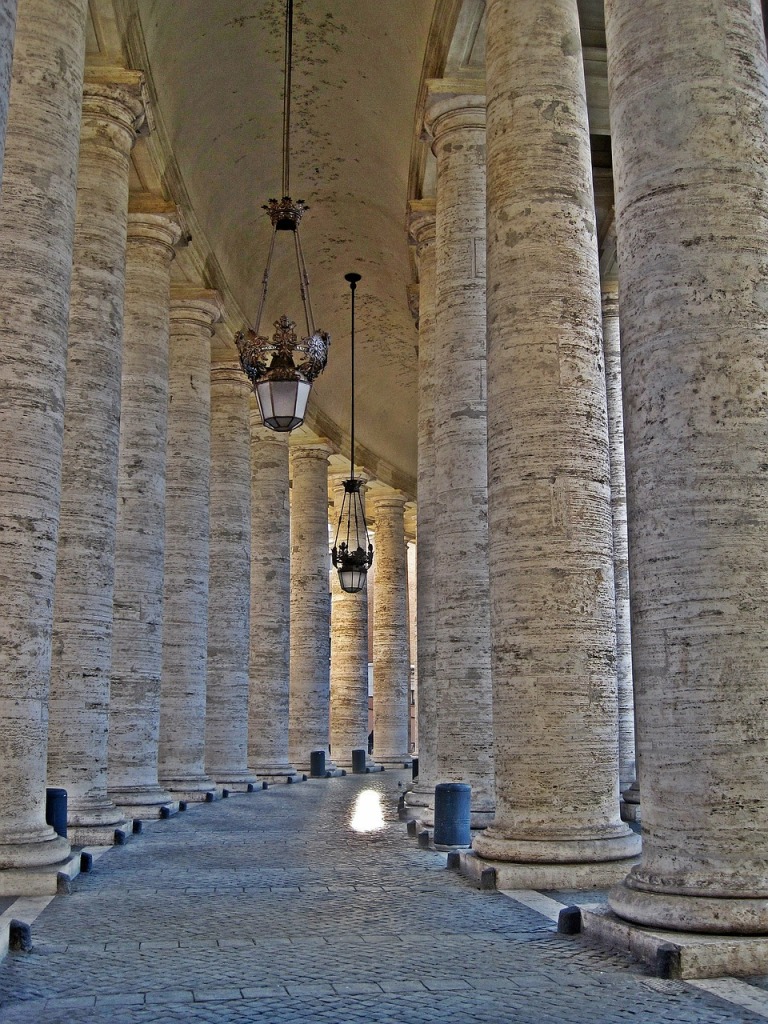
Al di sopra del colonnato, la balaustra sorregge le 140 sculture di Santi. Nella zona sinistra più prossima alla facciata ci sono i martiri che per aver diffuso e difeso il cristianesimo furono barbaramente uccisi e i fondatori dei primi ordini religiosi. Sulla destra invece fanno la loro comparsa vescovi ma anche papi e fondatori di ordini meno antichi.
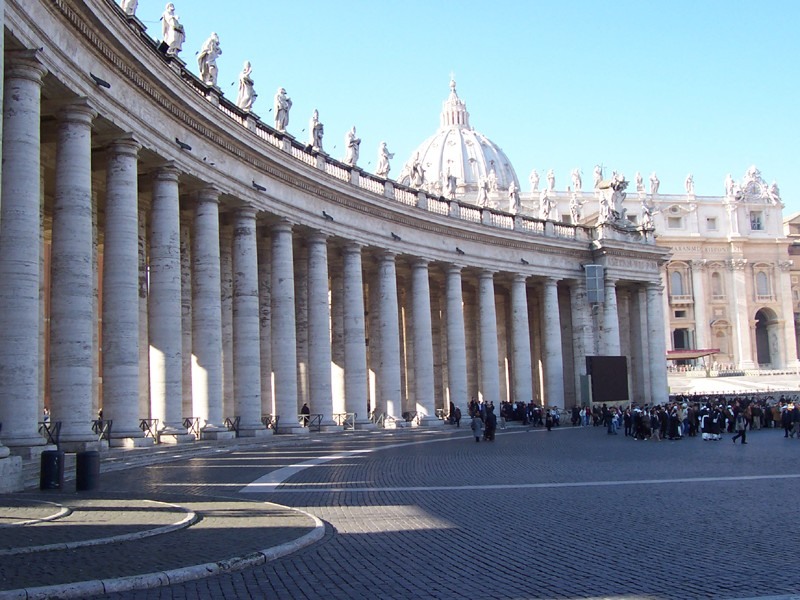
La Rosa dei Venti alla base dell’Obelisco
Avete mai notato la grande rosa dei venti alla base dell’Obelisco di Nerone? Ebbene, nel 1817 l’astronomo Gilij volle posizionare nella pavimentazione di Piazza San Pietro una rosa dei venti e la meridiana proprio alla base dell’obelisco, facendolo a tutti gli effetti funzionare come gnomone. Gnomone non è una parolaccia ma semplicemente la parte della meridiana che proietta l’ombra segnando così l’ora.
Sopra i sanpietrini fu realizzata una zona in granito rosso con incastonati sette dischi di marmo. Quelli alle estremità segnalano i due solstizi mentre gli altri cinque dischi servono per indicare il passaggio del sole nei segni zodiacali raffigurati.
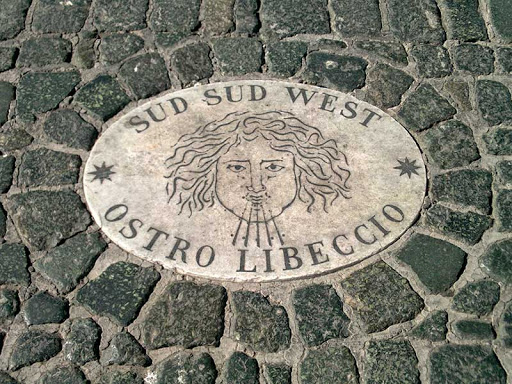
A seguire una delle elle foto più suggestive e simboliche di questo anno, scattata proprio in Piazza San Pietro. Papa Francesco durante la veglia Pasquale 2020 che si appresta a impartire la benedizione Urbi et Orbi da solo, a causa della pandemia di Covid-19 ancora in corso.
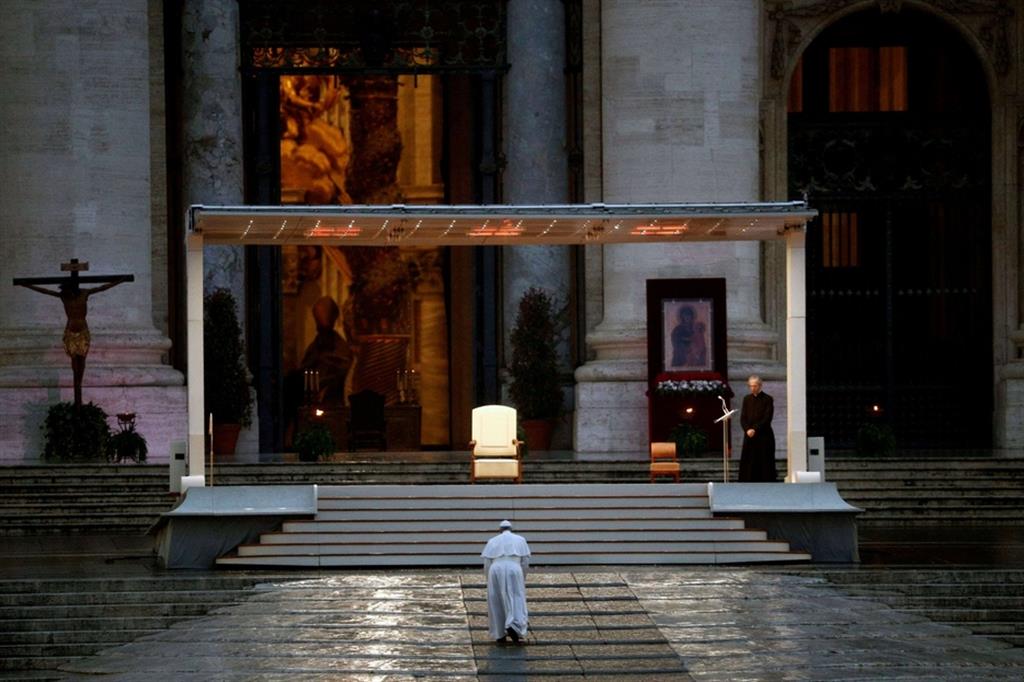
L’attentato a papa Giovanni Paolo II e la targa che lo ricorda
Il 13 maggio del 1981 Giovanni Paolo II venne gravemente ferito in Piazza San Pietro dall’attentatore Ali Ağca. Il pontefice fu raggiunto da due colpi e arrivò in ospedale in gravi condizioni.
Il luogo preciso dell’attentato ancora oggi è segnalato da una targa in marmo che riporta le insegne papali di Wojtyla e la data dell’accaduto in numeri romani.
Per il momento il vostro Michelangelo Buonarroti vi saluta dandovi appuntamento ai prossimi post e sui social.
St. Peter’s Square: history and changes over the centuries
St. Peter’s Square is one of the largest and most spectacular squares in the world. What would the basilica be without Bernini’s colonnade, the travertine saints that protect us from above and that large open space with the two twin fountains? Yet until 1656, the pilgrims who arrived in front of the Basilica found in front of them a disconnected land, surrounded by houses and small houses but without any delimitation.
What St. Peter’s Square was like before Bernini’s intervention
Nero’s obelisk was already there. It was brought up to the square by Pope Sixtus V in 1586, the same pontiff who had entrusted the conclusion of the dome to Giacomo della Porta. The water gushed from a single fountain, the one assembled in 1490 and then modified by Maderno at the beginning of the seventeenth century. The architect thought it best to turn the upper basin upside down to break the jet of water instead of collecting it inside.
San Pietro and San Paolo were already waiting for the faithful at the base of the staircase leading to the loggia. However, they were not the ones you see today, nineteenth-century renovations, but rather the work of the sculptor Paolo Romano from Sezze.
Even if the square as spectacular as today, on particular occasions such as the papal blessings imparted by the loggia, was filled beyond belief with faithful.
St. Peter’s Square: the commission
It was Pope Alexander VII Chigi in 1657 who commissioned Gian Lorenzo Bernini to make a new project for the definitive arrangement of St. Peter’s Square. The pontiff did not exactly leave the artist carte blanche but specified that it should be a large portico able to accommodate the faithful and that could somehow regulate the bustle of carriages. Not only that, always according to the pope’s will, the portico should have been surmounted by sculptures.
Bernini immediately set to work and then wrote about his project: “Since the Church of San Pietro is almost the matrix of all the others, it must have had a portico that precisely showed that it received the Catholics with open arms. confirm them in belief, the Heretics to unite them to the Church, and the Unfaithful to enlighten them with the true faith. “
How is St. Peter’s Square today
Today St. Peter’s Square can hold more than 300,000 people. Regardless of expense, Bernini managed to create a place that with its shape embraces the pilgrims who continually arrive from all over the world.
The 284 Doric travertine columns with 88 pillars arranged in four rows, in Tivoli travertine, frame the square. The rows of columns have a slight convergence in the direction of the basilica: in this way the square has a wider breath and the facade of St. Peter seems much closer to those arriving in the square than it actually is.
Above the colonnade, the balustrade supports the 140 sculptures of Saints. In the left area closest to the facade there are the martyrs who were brutally killed for spreading and defending Christianity and the founders of the first religious orders. On the right, on the other hand, bishops but also popes and founders of less ancient orders make their appearance.
The Rose of the Winds at the base of the Obelisk
Have you ever noticed the great wind rose at the base of Nero’s Obelisk? Well, in 1817 the astronomer Gilij wanted to place a compass rose and the sundial right at the base of the obelisk on the pavement of St. Peter’s Square, making it function as a gnomon in all respects. Gnomon is not a dirty word but simply the part of the sundial that casts the shadow thus marking the time.
Above the cobblestones an area of red granite was created with seven marble disks set. Those at the ends indicate the two solstices while the other five discs are used to indicate the passage of the sun in the zodiac signs depicted.
The attack on Pope John Paul II and the plaque commemorating him
On May 13, 1981, John Paul II was seriously wounded in St. Peter’s Square by the bomber Ali Ağca. The pontiff was hit by two shots and arrived at the hospital in serious condition.
The exact location of the attack is still marked today by a marble plaque bearing the papal insignia of Wojtyla and the date of the incident in Roman numerals.
For the moment, your Michelangelo Buonarroti greets you by giving you an appointment at the next posts and on social networks.

Sostienici – Support Us
Se questo blog ti piace e ti appassiona, puoi aiutarci a farlo crescere sempre più sostenendoci in modo concreto condividendo i post, seguendo le pagine social e con un contributo che ci aiuta ad andare avanti con il nostro lavoro di divulgazione. . ENGLISH: If you like and are passionate about this blog, you can help us make it grow more and more by supporting us in a concrete way by sharing posts, following social pages and with a contribution that helps us to move forward with our dissemination work.
5,00 €

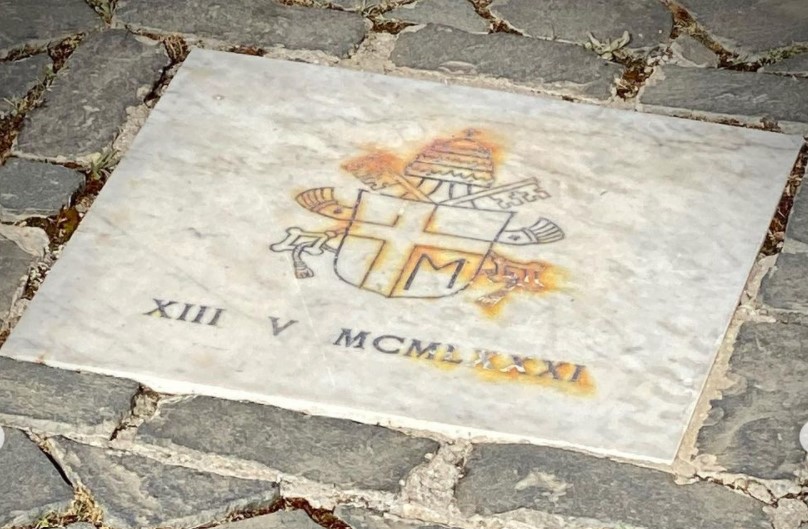






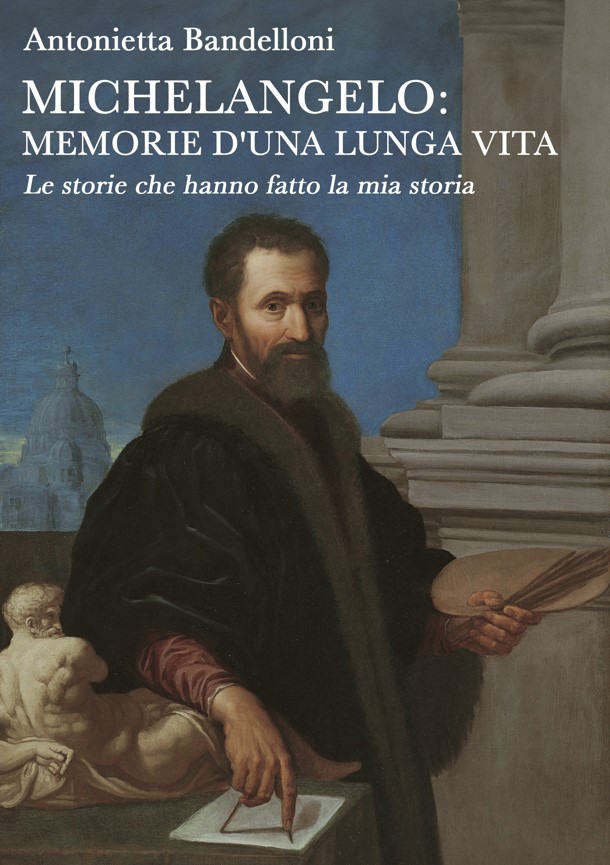




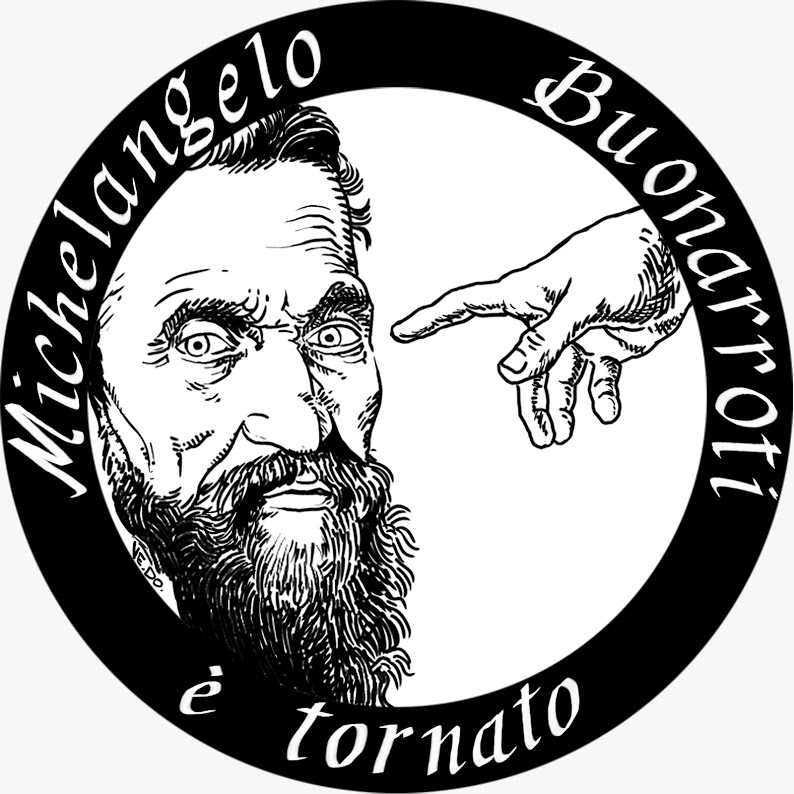
1 commento »